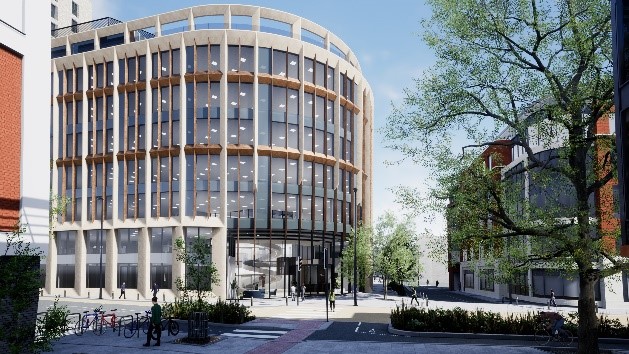
2020 was a year like no other, ‘unprecedented’ and ‘next slide please’ became catchphrases we all probably wish we didn’t have to hear. Among the tough news stories, we did have some cheer, but the contrast of highlighting the divide in society between the ‘haves’ and the ‘have nots’ really did come to the fore in a way that hadn’t been spoken about before. I’m not wanting to dwell on these aspects in this piece, being unqualified to comment, but I do want to talk about one item raised in the public agenda in 2020 and that is the importance of access to open space and public realm within our local area. Something which has become even more pertinent this year whilst we have been restricted to movement in and around our homeplace.
As developers, we have a responsibility to look at the areas where we are building and to really think about how the spaces between the buildings will be used by those who occupy them. We need to provide the right mix of uses and create places where people want to come and can be happy and thrive without having to get into a car or travel a significant distance.
At Cubex, this is something we have always put at the forefront of our developments, and the work we have done at Finzels Reach was not something done by chance, but something which was carefully designed and created from the start.
I believe the key to this, and something all developers should do at the start, is to put yourself in the shoes of those who will occupy your buildings, to look at the building(s) you are creating and ask yourself three questions:
These three questions may seem simple, but they open a number of design considerations we, as developers, should be thinking about for both the facilities within the buildings, but also the public realm we may create through our own investment or other means, be it s.278 highway works, s.106 contributions, CIL payments etc. We need to complement the area we are in and not compete with it by virtue of what we provide, so we are creating a balanced environment and a community which isn’t heavily swayed in one provision but lacks in others.
I mentioned our work at Finzels Reach earlier and I’m going to touch on a few items to show practical examples of what we can do and, most importantly, have done on this scheme by way of hopefully encouraging others to do the same.
Finzels Reach has been a long journey for us, with a series of buildings, including:
Within these spaces we have included elements of retail and leisure space which provides food & drink facilities to add to the vibrancy of the area and ensure the ‘placemaking’ element not only looks at the public realm spaces, but also reflects the vibrant neighbourhood we set out to create.
We provided extensive public realm in the first phase to create pedestrian routes between the buildings which in turn were appropriately spaced apart, not for vehicular use (aside from maintenance) but for people to be able to congregate. Adding raised planters provided a green feeling but, by having safe paved areas, we don’t prohibit someone with mobility issues from accessing the space, nor do we create a maintenance issue which leads to untidy rundown areas in years to come. This safe, pedestrian friendly area also allowed space for the Finzels Reach food market to be held which is now run weekly on a Wednesday and Friday and provides a great bonus for office occupiers and residents to enjoy local produce. The not insignificant addition of a pedestrian and cycle bridge to connect to the green space of Castle Park further adds to enhancing the connectivity of the scheme with the wider City. Within our buildings we provided roof top terraces to give occupants the opportunity to spend their free time in private outdoor space or within the public areas we have created.
As we move into our final phase of this major regeneration project with Halo, Millwrights Place and Coopers Court, we are focussing on complementing the public realm we have already delivered. We are investing heavily in traffic calming measures making the vehicular routes within the area safer. Permanent cycle lanes coupled with one way traffic routes will allow more pedestrian space, facilitate sustainable means of travel and add to the provision of outdoor space for those living and working in the area. Additional outdoor seating will provide more opportunities for people enjoy their food from the market or cafés and just add to the ‘buzzy’ environment.
Whilst, individually, these may seem trivial, it is only by taking a holistic view on matters that we can really enhance the areas we develop in order to provide something people want and will use.
I am pleased to say the above is only a snapshot and, in my next piece, I’ll give some insight into how we’ve thought even further outside the box and our immediate surroundings at Finzels Reach with our investment to “Catalyse a new future for Temple Church & Gardens”.